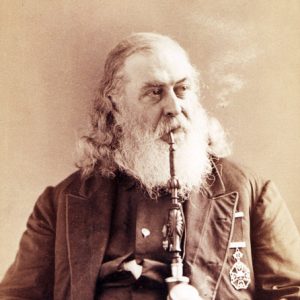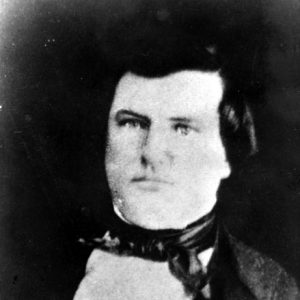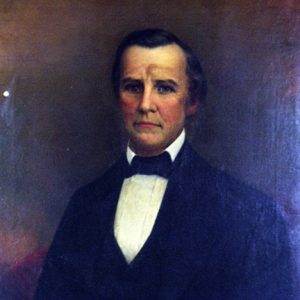calsfoundation@cals.org
Arkansas Mounted Rifles [Mexican War]
The Arkansas Mounted Rifles was a regiment of volunteers from the state who participated in the Mexican War as part of the U.S. Army. Many of its officers and men came from the upper reaches of Arkansas society, and members of the unit would be involved in the state for years to come.
With the outbreak of war in the spring of 1846, Arkansas was asked by the federal government to provide two units for service with the U.S. Army. An infantry battalion of Arkansas volunteers would be used to man forts in the Indian Territory and at Fort Smith (Sebastian County), releasing the regular troops from those posts, and a second unit of Arkansans would serve as cavalry in Mexico. By early July 1846, ten companies of cavalry had arrived in Washington (Hempstead County), where the unit was organized and officers elected. Former governor and congressman Archibald Yell was selected as colonel of the unit, with John Selden Roane and Solon Borland elected as lieutenant colonel and major, respectively. Companies of the regiment represented Pulaski, Pope, Johnson, Independence, Crawford, Sevier, Franklin, Hot Spring, Saline, and Phillips counties.
Mustering into federal service on July 13, the regiment moved southwest, arriving in San Antonio, Texas, on August 28. Joining an army under Brigadier General John Wool, the Arkansans quickly clashed with their commander over issues such as military discipline and basic sanitation. Most of the regiment did not regularly drill, and military discipline was extremely lax. Wool gave the regiment the sobriquet “Arkansas Mounted Devils” due to their behavior, and units from other states took notice of the behavior exhibited by the Arkansans. Regardless, the unit crossed into Mexico on October 21 with the rest of Wool’s army.
Over the next several months, the army captured several cities and marched hundreds of miles without meeting the enemy. The two best-drilled companies of the regiment were detached and served as a squadron under the command of Captain Albert Pike. Other companies of the regiment continued to act in an unmilitary manner, most notably when they killed several Mexican civilians after an Arkansan from the unit was murdered by local citizens. Another blemish on the record of the Arkansas regiment occurred on January 22, 1847, when thirty-four Arkansans and a group of Kentucky cavalry, all commanded by Major Borland, were captured by a Mexican force after neglecting to post guards.
Convinced that the Mexican army was embarking on an offensive operation, Wool and his army fell back to Angostura, which could be more easily defended. Colonel Yell and the regiment were tasked with ensuring that the army’s supplies were transported to the new camp, but after Mexican forces fired upon the Arkansans, Yell burned the supplies that had not yet been removed and retreated after the rest of the army to Buena Vista.
Under command of General Santa Anna, the Mexican army attacked the Americans near Buena Vista on February 23, 1847. The Arkansas regiment was unable to hold its position and fled in confusion when ordered to charge by Col. Yell. Charging alone, the former governor Yell was killed. Even with the Arkansans’ flight from the battlefield, the American army carried the day with help from Capt. Pike’s squadron.
The Arkansas Mounted Rifles saw little service after the Battle of Buena Vista and were mustered out in June. Pike, Roane, and several others returned to Little Rock (Pulaski County) on July 9, 1847. Pike publicly criticized the commanders of the regiment for the lack of discipline and cowardice displayed in battle, which eventually led to an inconclusive court of inquiry. With Yell killed in battle and Borland captured by Mexican forces, Roane tried to defend the regiment’s honor. He and Pike met in the Cherokee Nation near Fort Smith on July 29, 1847, and engaged in a duel over the charges. Neither man was hurt, and both agreed to drop the matter.
While the Arkansas Mounted Rifles did not see much action in the war, their ranks were full of notable Arkansans. The most important impact that the unit had on Arkansas was as a training ground for future Confederate officers. Roane later served as governor and was a Confederate general. Pike also served as a Confederate general, while Solon Borland served as a U.S. senator.
For additional information:
Brown, Walter. A Life of Albert Pike. Fayetteville: University of Arkansas Press, 1997.
———. “The Mexican War Experiences of Albert Pike and the ‘Mounted Devils’ of Arkansas.” Arkansas Historical Quarterly 12 (Winter 1953): 301–315.
Cumming, Travis. “‘We come here to fight, sir!’: The Arkansas Regiment of Mounted Volunteers in the Mexican War.” Arkansas Military Journal 7 (Fall 1999): 18–47.
Frazier, William A., and Mark K. Christ, eds. Ready, Booted, and Spurred: Arkansas in the U.S.-Mexican War. Little Rock: Butler Center Books, 2009.
David Sesser
Henderson State University
 Louisiana Purchase through Early Statehood, 1803 through 1860
Louisiana Purchase through Early Statehood, 1803 through 1860 Solon Borland
Solon Borland  Albert Pike
Albert Pike  John Roane
John Roane  Archibald Yell
Archibald Yell 



Comments
No comments on this entry yet.